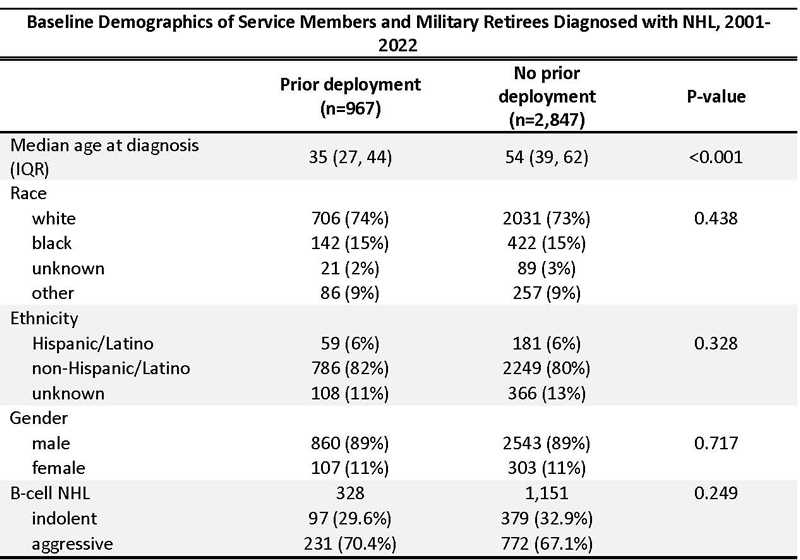BETHESDA, MD—A study presented at the 65th American Society of Hematology Annual Meeting on Dec. 9, 2023 provided additional evidence for the healthy deployer effect, this time in individuals with non-Hodkin lymphoma.
While much has been written about the potential effects of exposure to environmental hazards during deployments to Afghanistan and Iraq, recent studies have found that active duty U.S. servicemembers who did not deploy had a higher risk of cancer mortality than their counterparts who served in Operation Iraqi Freedom and Operation Enduring Freedom and that the same was true for Nordic servicemembers when comparing those who deployed to those who did not.
U.S. Army and Air Force researchers sought to determine the association between deployment and survival in servicemembers with non-Hodgin lymphoma and aggressive B cell lymphoma. To do so, they turned to the DoD’s Tumor Registry and the Defense Manpower Data Center. Robert Sgrignoli, DO, of the Walter Reed National Military Medical Center, presented their results at the 65th American Society of Hematology Annual Meeting in San Diego on Dec. 9.
The team identified 2,295 servicemembers and retirees who were diagnosed with non-Hodgkin lymphoma (NHL) between 2001 and 2022. Of those 467 or 22% had previously deployed. The median age at diagnosis in deployed personnel was substantially younger at 35 years than in nondeployed personnel, 54 years, though race, ethnicity and gender representation were similar in both groups.
The team found that prior deployment was associated with a 37% improvement in survival after accounting for age, race, ethnicity, gender and stage of disease at diagnosis (OR 0.63, 95% CI 0.40-0.97, p=0.037). White patients lived nearly twice as long as Black patients and those with stage I disease at diagnosis lived nearly three times longer than those diagnosed at stage IV.

Sgrignoli R, Rendo MJ, Sunderland K,, Fenderson J, Kou C, Aden JK, Morris MJ, DeStefano C. Impact of Deployment on Survival in Military Personnel with Non-Hodgkin Lymphoma. Abstract 1767. ASH 2023. Dec. 9, 2023.
A post-hoc analysis demonstrated that servicemembers with prior deployment and those without were equally likely to have indolent or aggressive subtypes of B cell NHL. Of those with prior deployments, 29.6% had indolent and 70.4% had aggressive B cell NHLs, while for those who did not deploy, the split was 32.9% for indolent and 67.1% for aggressive B cell NHLs.
After adjustment for age differences between the two groups, those who had deployed lived longer than those who did not deploy, a finding that could not be attributed to differences in distribution of aggressive B cell NHL subtypes.
“These results highlight the healthy deployer effect, in which ADSM who are deployable are required to meet minimum fitness standards, undergo a physical health assessment, and do not have disqualifying comorbidities,” the team said. “This study did not evaluate whether an overseas deployment is associated with an increased risk of NHL, but it does appear to provide evidence that potential deployment-related exposures do not appear to alter the biology or subtype of B-cell NHLs.”
1Sgrignoli R, Rendo MJ, Sunderland K,, Fenderson J, Kou C, Aden JK, Morris MJ, DeStefano C. Impact of Deployment on Survival in Military Personnel with Non-Hodgkin Lymphoma. Abstract 1767. ASH 2023. Dec. 9, 2023.


